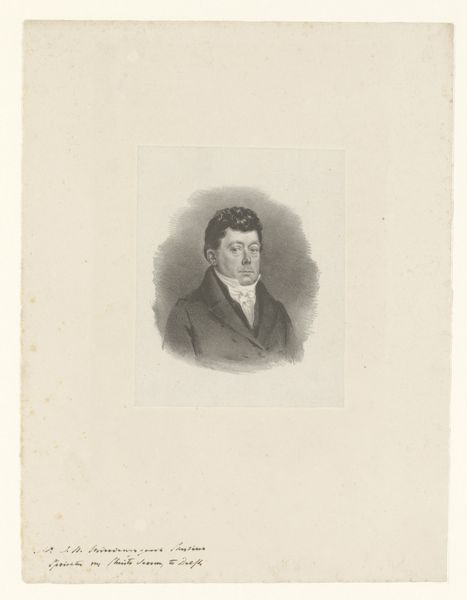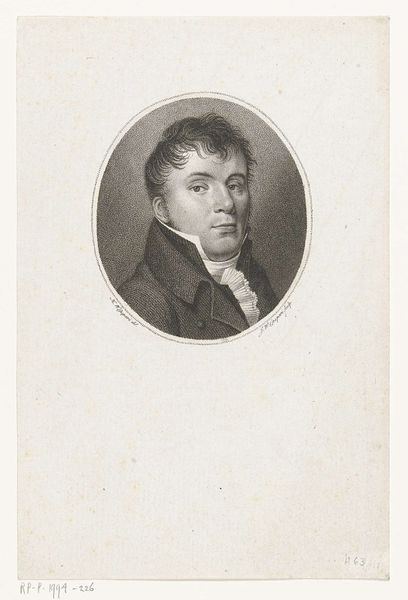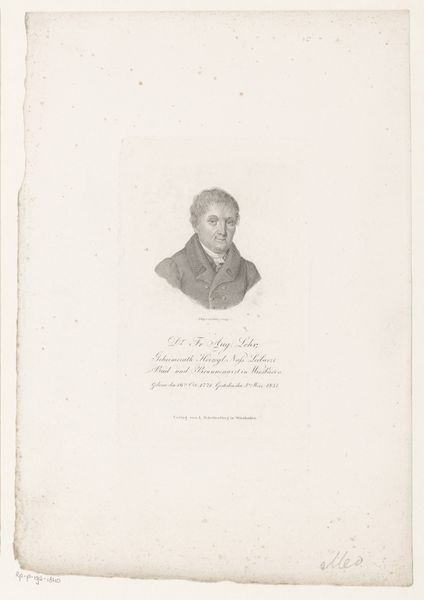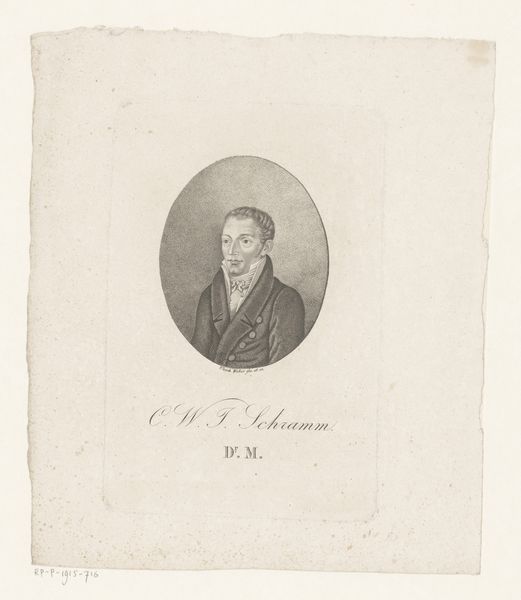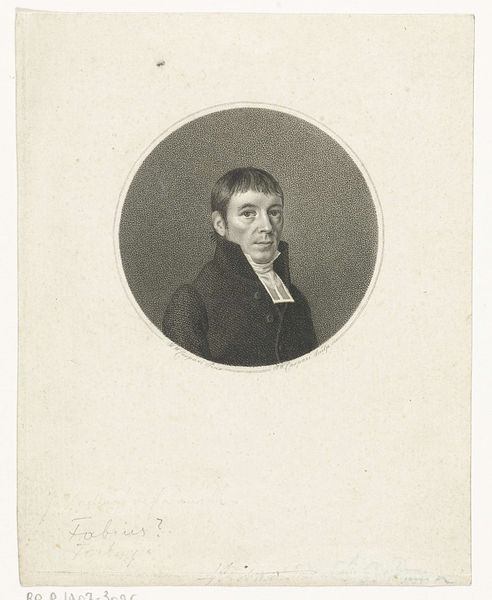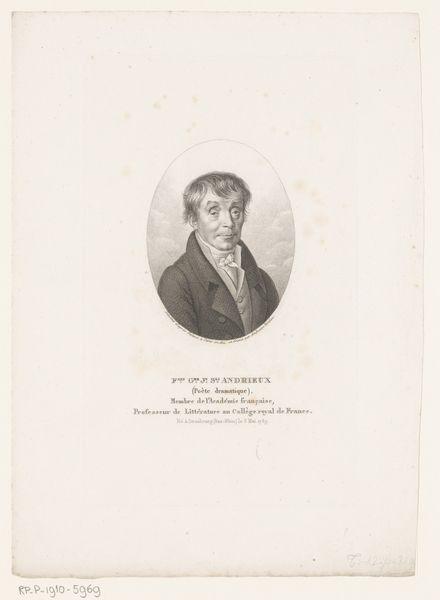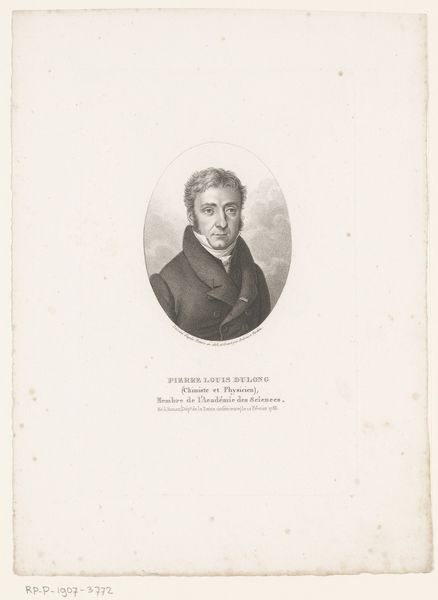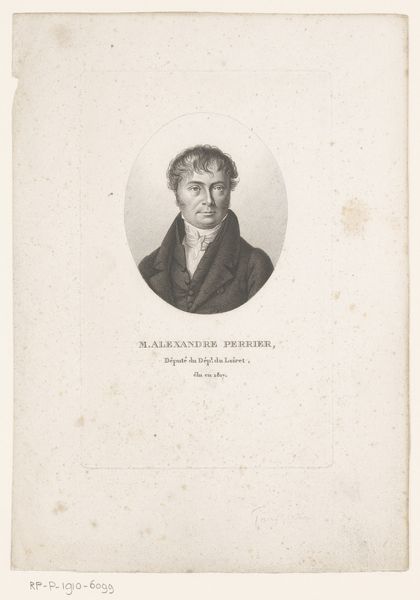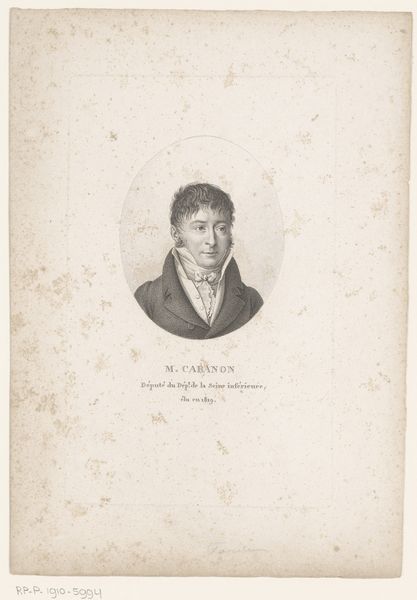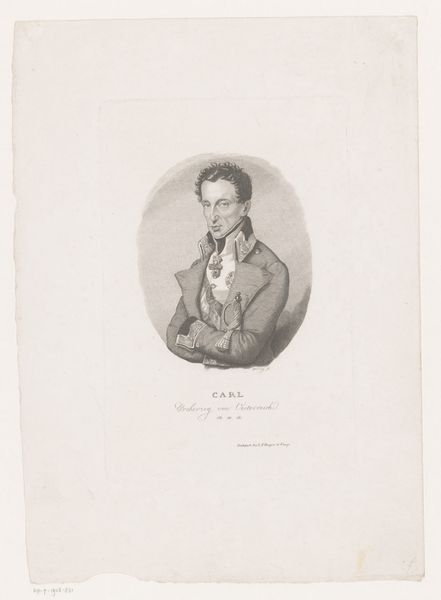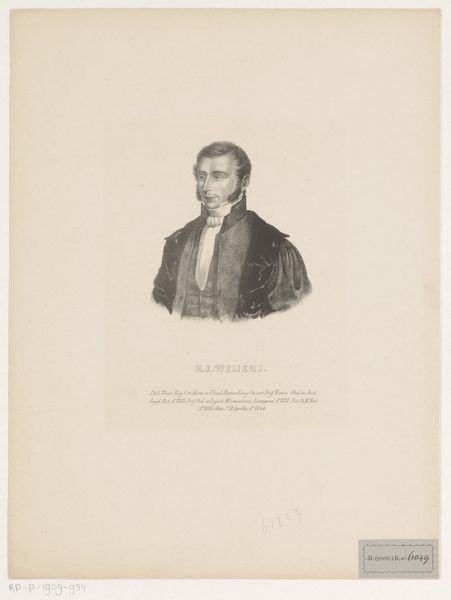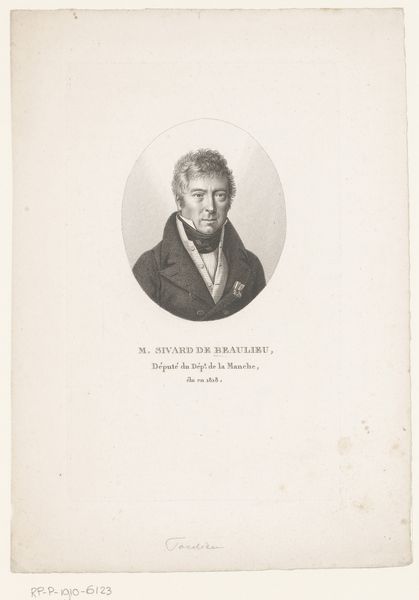
drawing, engraving
#
portrait
#
drawing
#
neoclacissism
#
old engraving style
#
academic-art
#
engraving
Dimensions: height 218 mm, width 137 mm
Copyright: Rijks Museum: Open Domain
Editor: So, here we have "Portret van Auguste Hilarion, graaf van Kératry," an engraving from around 1820 by Ambroise Tardieu. The tight oval frame makes the subject seem kind of formal and constrained. What stands out to you? Curator: It’s a fascinating example of Neoclassical portraiture adapting to the post-revolutionary era. While the sharp lines and controlled composition echo earlier styles, consider the sitter's gaze. Does it strike you as embodying the confidence one might expect of nobility during that period, or perhaps something else? Editor: He doesn’t exactly scream revolutionary spirit, but there's a certain unease that seems present. Maybe I’m just projecting? Curator: Not necessarily. Think about the socio-political climate. While officially the aristocracy was back, their power was forever altered. This engraving, made for public consumption, walks a careful line. How do you see the choice of engraving, a relatively reproducible medium, playing into the image's function as public art? Editor: Engraving makes it accessible, right? Maybe this was meant to project a carefully managed image of authority, reassuring to some but perhaps unsettling to others, given the recent upheaval. Curator: Exactly! It is less about individual likeness and more about the *idea* of nobility being presented to the public. It also reflects how even traditional art forms adapted to a changing market where images were increasingly circulated. We can imagine this work appearing in print form to build narratives about a figure in power and shape popular perceptions. The question remains how that reception evolved across the 19th century as new social classes emerged in Europe. Editor: So, the choice of medium is less about artistic expression and more about social function in this case. Interesting, it’s not just a picture but also part of a wider message! Curator: Precisely, by understanding art’s connection with sociopolitical dimensions and imagery circulation. We can have more in-depth appreciation and understandings of a piece like this.
Comments
No comments
Be the first to comment and join the conversation on the ultimate creative platform.
